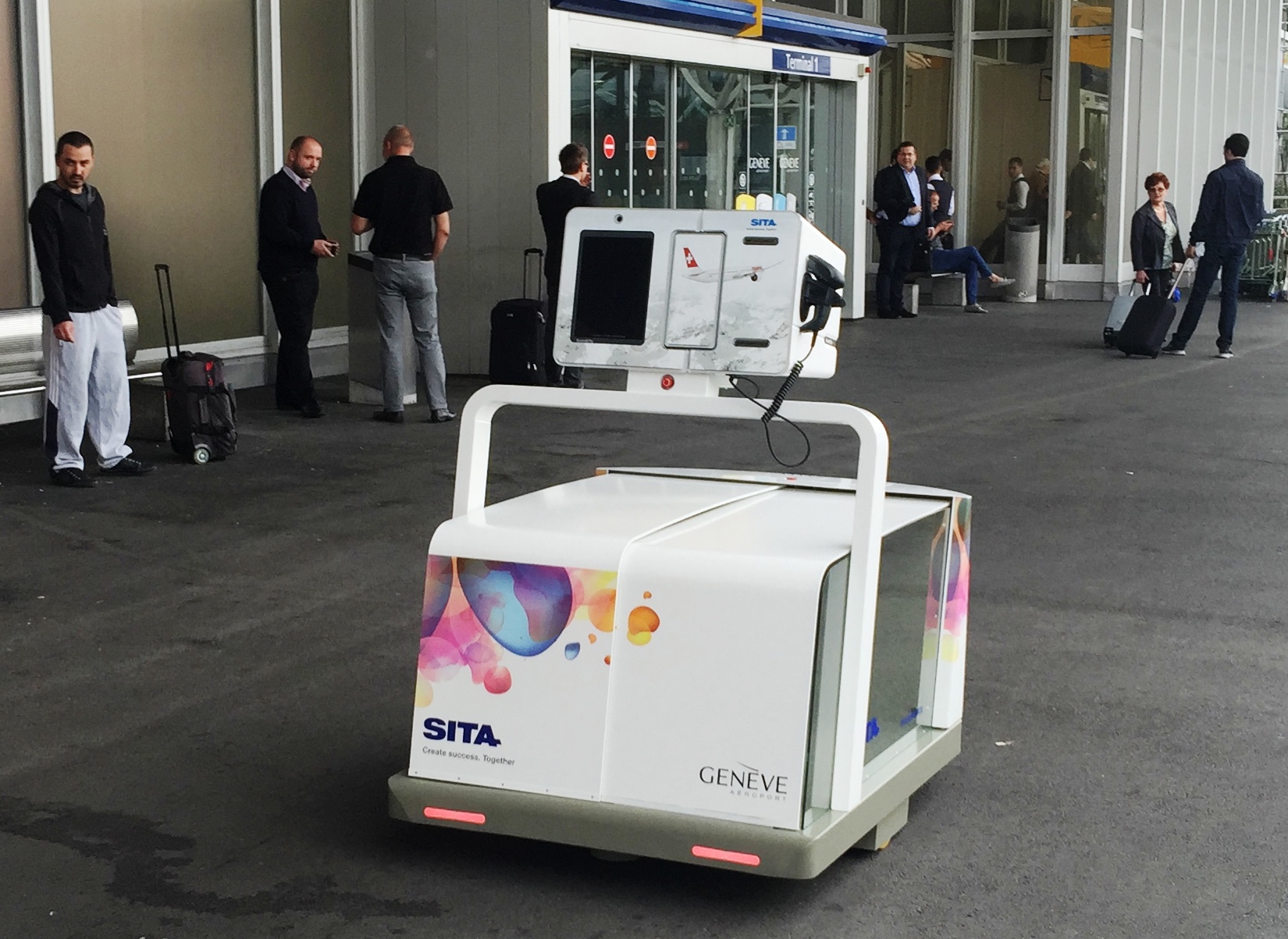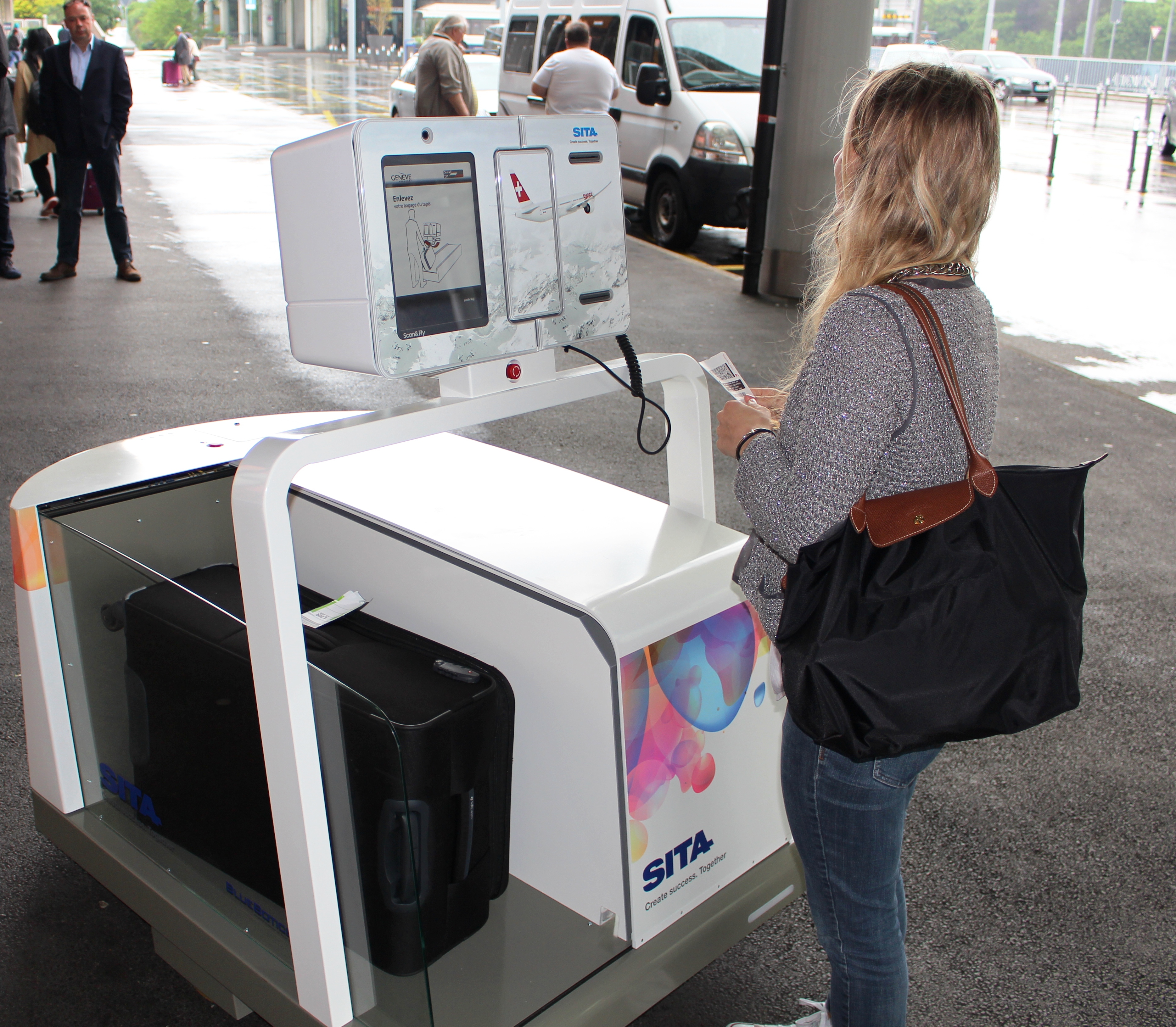But while these examples of technology are things we’re well and truly used to here in 2016, Geneva Airport recently introduced travelers to an altogether more futuristic innovation: a prototype airport robot, dubbed “Leo.”
Developed as a collaboration between Swiss robotics firm BlueBotics and SITA, a company which creates cutting-edge airport technology, Leo greets customers as they arrive for their flights. Passengers can use Leo’s touch display to scan their boarding passes, print out their luggage tags and see appropriate information about their boarding gate, before the robot autonomously transports their bags (so long as they weigh less than 70lbs) to the correct baggage handling area.
Its creators hope that the Leo technology — when rolled out across the entire airport — could help cut down on congestion and make the bag check-in process more seamless. “By combining automation with SITA’s existing self-service bag-drop technology, Leo demonstrated how the bag-drop process could be completed outside of the terminal building without the passenger or their bags having to enter the check-in area of the airport,” Stephane Cheikh, ventures and innovation manager at SITA Lab, told Digital Trends.
“This has helped significantly reduce the number of trolleys and bags in the terminal,” Cheikh continued. “Leo also provides an interesting glimpse into the future of baggage processing and handling being explored by SITA Lab, SITA’s technology research team. Using robotics and artificial intelligence, bags will be collected, checked in, transported and loaded onto the correct flight without ever having to enter the terminal building or be directly handled by anyone other than the passengers themselves.”
Now if only SITA could come up with a way to make him wave to you as your plane was taking off …







